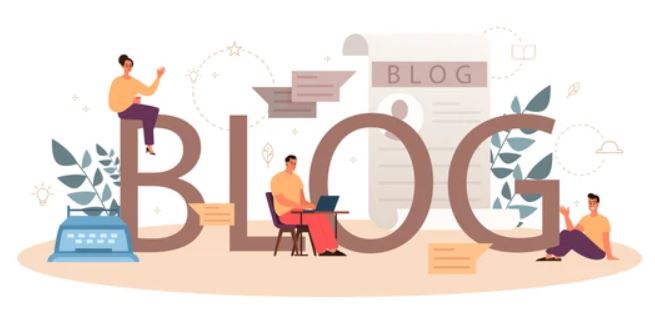Social media is any digital tool that allows users to quickly create and share content with the public. Social media includes a wide range of websites and applications. Some, like Twitter, specialize in sharing links and short written messages. Others, like Instagram and TikTok, are designed to streamline photo and video sharing.
What makes social media unique is that it is both broad and relatively uncensored. While many social media companies impose some restrictions - such as removing images that show violence or nudity - there are far fewer limits on what someone can share than with other mass communications media such as newspapers, radio stations, and television channels.
Because social media includes so many different types of websites and applications, the function of these tools also varies. However, most social media sites begin with a user creating a profile, usually by providing a name and email address. Once a profile is created, users can create and share content. For example, an Instagram user with a new account can take a photo and post it to their profile with a caption.
In addition to creating content for their profile, social media users can also find other users whose content they want to follow or comment on. Depending on the type of social media, a user can "follow" another user, add them as a "friend," or "subscribe" to another user's page.
Because social media includes so many different types of websites and applications, the function of these tools also varies. However, most social media sites begin with a user creating a profile, usually by providing a name and email address.
5 Top Social Media Sites
Facebook

Facebook is a website that allows users who sign up for a free profile to connect online with friends, work colleagues or people they don't know. They can share pictures, music, videos and articles, as well as their own thoughts and opinions, with as many people as they want.
Once the request is accepted, the two profiles are connected and both users can see what the other person is posting. "Facebookers" can post almost anything to their "Timeline," a snapshot of what is happening in their social circle at any given time, and they can also have a private chat with other friends who are online.
People with profiles post information about themselves. Be it what they do for work, where they study, how old they are or other personal details, many users post a lot of information that is easily accessible to their friends and others. In addition, users can "like" other pages that interest them. For example, a fan of Liverpool FC can follow the club by connecting to its Facebook page. There, the user can post comments and get up-to-date information about the club, pictures, etc.
WhatsApp
WhatsApp is a free downloadable messenger app for smartphones. WhatsApp uses the Internet to send messages, pictures, audio or video. The service is very similar to SMS services. However, since WhatsApp uses the Internet to send messages, the cost of using WhatsApp is much lower than SMS. You can also use WhatsApp on your desktop. Just go to the WhatsApp website and download it on Mac or Windows. It is popular among youngsters because of its features like group chats, voice messages and location sharing.
WhatsApp, which is owned by Facebook, now has 1 billion users worldwide and is the largest online messenger app on the market. Founded in 2009 by former Yahoo employees, it started as a small startup and grew to 250,000 users within a few months, so quickly that an annual fee for using the service had to be introduced to curb the subscription rate.
Twitter
Twitter is known as a microblogging website. Blogging has been around for some time. Usually, blogging consists of people setting up simple websites where they write about anything, be it politics, sports, cooking, fashion, etc. Posting a message is called a tweet. People make connections by following other people's Twitter feeds. Once you click follow, everything that person or organization says appears in your timeline. You can tweet a person by putting the @ symbol in front of their username.
Retweeting is also an important part of Twitter. This involves tweeps, as users of the site are called, repeating tweets from other users to their own followers. Many activities on Twitter involve the use of hashtags. These are handles used to summarize tweets on the same topic. For example, if many people attend a conference and want to know what the speakers are saying, they tweet to an agreed hashtag using the # symbol followed by the agreed name.
Instagram
Instagram is primarily a social networking app that allows users to share pictures and videos with their friends. The app can be downloaded for free from the usual app stores and has a permanent place on the smartphone of many young (and older!) people. The company was founded in 2010 by Kevin Systrom and Mike Krieger, both graduates of Stanford University, and now has around 200 million users. Facebook, the social networking giant, acquired the company in 2012. The basic idea is to share pictures, but the site's popularity is based on its picture-editing feature. Instagram Stories allows users to post a selection of photos/videos in a story.
The new feature works similarly to Snapchat Stories, with Stories disappearing after 24 hours. Instagram Stories are not published to the user's profile or newsfeed. Instagram Stories are subject to the same privacy settings as a user's Instagram profile. For example, if a user has a private account and posts a Story, only the user's friends can see that Story. Instagram Direct lets you share photos, videos, hashtag pages, profiles, and places with a single person or a small group of people (up to 15 people) directly from a user's newsfeed. You can access Instagram Direct from the Inbox icon in the upper-right corner of the app.
YouTube
YouTube is a video sharing website. Millions of users around the world have created accounts on the site that allow them to upload videos that anyone can watch. Every minute, more than 35 hours of video are uploaded to YouTube every day. Video files can be very large and are often too big to email to someone. When you post a video on YouTube, you can share it by simply sending the other person a "link," which is the "address" of the relevant web page. When YouTube was launched in 2005, it was meant to publish and share original video content. Since then, however, it has also evolved into an archive where favorite clips, songs, and jokes are stored, as well as a marketing site for companies to promote their products.
Nowadays, the term "viral video" is in common use. This refers to a video clip that people liked so much that they emailed the link to millions of other people around the world - so it spread like a virus. Companies have realized that they can take advantage of this ability to reach potential customers and have set up their own YouTube accounts to post advertisements and other marketing videos.






















0 Comments